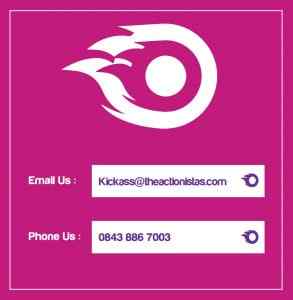How to Use #Hashtags for Greatest Effect
#ThisIsntAVeryUsefulHashtag – not because it’s too long or because it’s in mixed case, but because it doesn’t mean anything. No one will ever search for it and that’s what hashtags are intended to assist with – searches.
Hashtags are a Twitter Thing, Aren’t They?
Some people think that hashtags are for use only on Twitter, but the tag has been around a lot longer than our 140 character limited outlet, emerging as an identifier in IRC (Internet Relay Chat) in the late 1980s. It was used as a marker for topics of conversation so that users interested in talking about a topic could easily find others with the same interest.
Tags are still used in the same way today and they’re not limited to any platform. A #tag in a blog has as much meaning to a search engine as a #tag in a Facebook post, but they should come with a warning – don’t hashspam.
Hashspamming
Don’t litter your posts, blog or otherwise, with random tags that are there for the sole purpose of attracting traffic. Not only do search engines penalise the practice but it will damage the reputation of a site amongst visitors.
An example, to make things crystal clear (and we’ll use spaces to avoid those penalties) would be dropping in:
# justinbieber # taylorswift # christmaschocolate # rayban # xfactorgifty # popcornrecipe # dkny
None of these have anything to do with the content of this page, but were they to be left without spaces they’d become actual tags that may attract people looking for more information. That adds traffic to the site’s statistics and could add value to a site that has been built solely for the purpose of selling it on with high traffic figures (and potential advertising revenue).
Best Practice
Think about your hashtags carefully even before you start writing content. Doing so will help to keep your writing on topic, whether it’s a Tweet, Facebook post or a web page. You’ll certainly find that Twitter will help to hone your skills in creating short tags because of the character limit, so if you use Twitter for your business it’s the ideal place to start.
You can use Webstagram to find trending tags so that you can manipulate your Tweet and Instagram content to match what’s on the rise, or use third party services like Twubs.com, but you have to be fast. It’s no good finding a trending tag today and using it next week.
The best way to stay ahead of the curve is to set up alerts to notify you of anything that relates to your business. If you produce ice cream and a high profile figure is seen and reported as eating a flavour you make, your post may look like this:
” ‘# Celebname’ likes ‘# flavour’ ice cream. If they ever visit us they can have a tub of our ‘# flavouricecream’ for free. ”
It’s all in the art of spin and you need to quickly schedule a series of posts or a well-crafted blog to attract the right sort of attention that won’t make you seem duplicitous.
Some of the best campaigns
Charmin
Manufacturers of toilet tissue for anyone who hasn’t noticed, know that 40% of people aged 18-24 use social media in the bathroom. They launched the #tweetfromtheseat tag and encouraged users to join in the Twitter conversation.
Charmin has almost 69,000 followers on Twitter. The brand also places regular bathroom-related single-question polls with the tag #Charminasks.
Expedia
The travel company hijacked the tag #tbt (Throwback Thursday, a day of nostalgia over trips taken in the past) and created #throwmeback which was used to encourage people to post images of their previous holidays for a chance to win a trip to recreate the photograph.
The campaign exceeded 5 million impressions, reached 300,000 engagements and almost doubled Expedia’s Instagram traffic in 10 weeks.
Audi
Reaching back a few years to 2011, Audi created a #WantAnR8 campaign, running with the opportunity to win a weekend with an R8. The tag had originally been used by a fan of the company’s most desirable model and Audi granted her wish by lending one to her.
Using the loan as publicity (and featuring the tag on television), Audi drove up the use of the tag further by offering five more opportunities to win a weekend with the car.
All the users had to do for a chance of winning was tweet the tag and, to date, it’s been used over 100 million times (50,000 in the first 24 hours).
Making a Hash of #
Making up new tags is becoming more difficult without them being too long to be remembered or used easily, both of which are central to success. Expedia’s use of an already popular tag and piggy-backing onto it was an inspired move that we’re sure to see more of.
Tags are everywhere, but if you can create one that becomes synonymous with your business you’ll have a potential winner so long as you use it cleverly.
#ItCouldBeYou.
Need more help?
Get in touch!
